The concept of the brand came about due to a lack of representation of Islamic heritage within the South African creative landscape, particularly within fashion. The manifesto of the brand serves as an ode to previous generations’ role in dismantling systems of oppression, recalibrating systems to allow for the progress of future generations.
Imran Mohamed, ASA SADAN, 2021
A couple of months ago, news spread through Cape Town’s creative scene that an emerging local fashion brand, ASA SADAN, would be stocking their debut collection at the Duck Duck Goose flagship store in Bree Street, Cape Town. Now to contextualise how massive that achievement is – this is the exact same retail store which stocks the likes of Thebe Magugu, Rich Mnisi, Sindiso Khumalo, and more of South Africa’s premier luxury fashion brands.
At this point of discovery, a mirage of questions began to swarm my consciousness, such as: how an upcoming luxury house managed to attain such an amazing feat upon debut, who the creative genius behind the label is, and more!

Photography by Hishaam Abrahams
This is where my research into understanding the story of a brand which is so beautifully embedded within its garments began – a story masterfully narrated by its founder & creative director, Imran Mohamed. The ASA SADAN aesthetic is basically that of a contemporary tech-infused luxury brand, which is largely inspired by classic tailoring and indigenous craftsmanship.
This multifaceted designer is a creative polymath who has bounced around from many design-focused disciplines such as apparel, furniture & spatial design. Furthermore, he has obtained an assortment of qualifications from a multitude of industries – including a foundational qualification in Real Estate, complimented by a Masters in Business Administration (MBA) from the prestigious Central Saint Martins, based in London, UK, to mention a few.

Photograph by Imran Mohamed
I had the honour of virtually connecting with Mohamed in order to find out more about the ASA SADAN design ethos, the importance of luxury, heritage, tradition and modernity within his work, his debut collection at Duck Duck Goose, and much more.
Would you mind introducing ASA SADAN to us and including a short description of how the fashion brand came to fruition?
ASA SADAN is a luxury, heritage apparel concept that references themes, motifs and iconography of South African history and heritage – with particular focus on my lineage, heritage and lived experience as a Muslim person of colour in Cape Town.
The concept of the brand came about due to a lack of representation of Islamic heritage within the South African creative landscape, particularly within fashion. The manifesto of the brand serves as an ode to previous generations’ role in dismantling systems of oppression, recalibrating systems to allow for the progress of future generations.
The brand concept was initially developed as one of three art projects presented in my final dissertation at art and design school Central Saint Martins in London, entitled The Intersection of Art and Geopolitics: Exploring The Historical Narrative of South African Socio-Economics and Identity Politics Through Art and Design.

Photograph by Imran Mohamed
What is the back-story on the name – ASA SADAN – what does it mean?
The name ‘Asa’ (pronounced ‘ay’ – ‘sah’) is a Malaysian/Indonesian adaptation of the Persian name ‘Asa’ (pronounced ‘ah’ – ‘sah’), with a multitude of meanings including ‘beautification’, ‘adornment’, ‘might’, ‘power’ and ‘capability’.
The brand is named after my grandmother, Asa Sadan, referencing his heritage and delineation of the South African-Asian diaspora. The brand’s name also serves as an ode to a generation who challenged colonial oppression at its highest form. Through the struggles and achievements of previous generations, we are now able to enjoy opportunities and freedoms not experienced by our forefathers.
At the core of your luxury brand’s focus is luxury, heritage, tradition and modernity – why this specific combination?
The brand manifesto aims to represent our heritage in a manner that exalts the individual beyond the glass ceilings created by external narratives, systems and structures. This serves as the foundation upon which the future will be built, redesigning systems that require recalibration (modernity).
Through all my creative work, my aim was always to portray people of colour in a manner that shows the true beauty and diversity of our lineage. We, as people of colour, have been placed in the box of ‘street culture’; my view is that our cultural depth and creative integrity of past and present generations are the foundations of ‘luxury’ (adopting a meaning here far beyond monetary wealth or status).
As an extension, our garments should emulate this luxury, not through exclusivity or exorbitantly high prices, but through careful consideration of both the product and what narrative it represents. Beautiful garments do something incredible to the spirit, something that might not be replicable by the current logo-based, trend-based hyper-consumerist landscape we are faced with today.

Photograph by Hishaam Abrahams
I understand that you have completed a couple of local design and fashion internships, as well as an MBA from Central Saint Martins in London. Please briefly talk us through how this process was for you as someone who didn’t have an initial qualification in fashion?
My foundational qualification is actually in Real Estate, moving within the engineering faculty from Mechatronics. So design has always been the focus. My family heritage lies in garment trade, from retail to factory management, from pattern making to modelling – I grew up with Vogue, Harper’s Bazaar and House & Leisure on the coffee table.
Combining design and commerce was at the core of my education, which I am pursuing through various design mediums, including apparel, furniture and spatial design (real estate).
After graduating, I sought to learn more about garment as a craft, but not through full time study. I decided instead to intern, initially in apparel and then in bags design, eventually working as a designer full time, studying courses in fashion design part-time. Alongside this, I started styling on a freelance basis and worked in various roles within the real estate space.
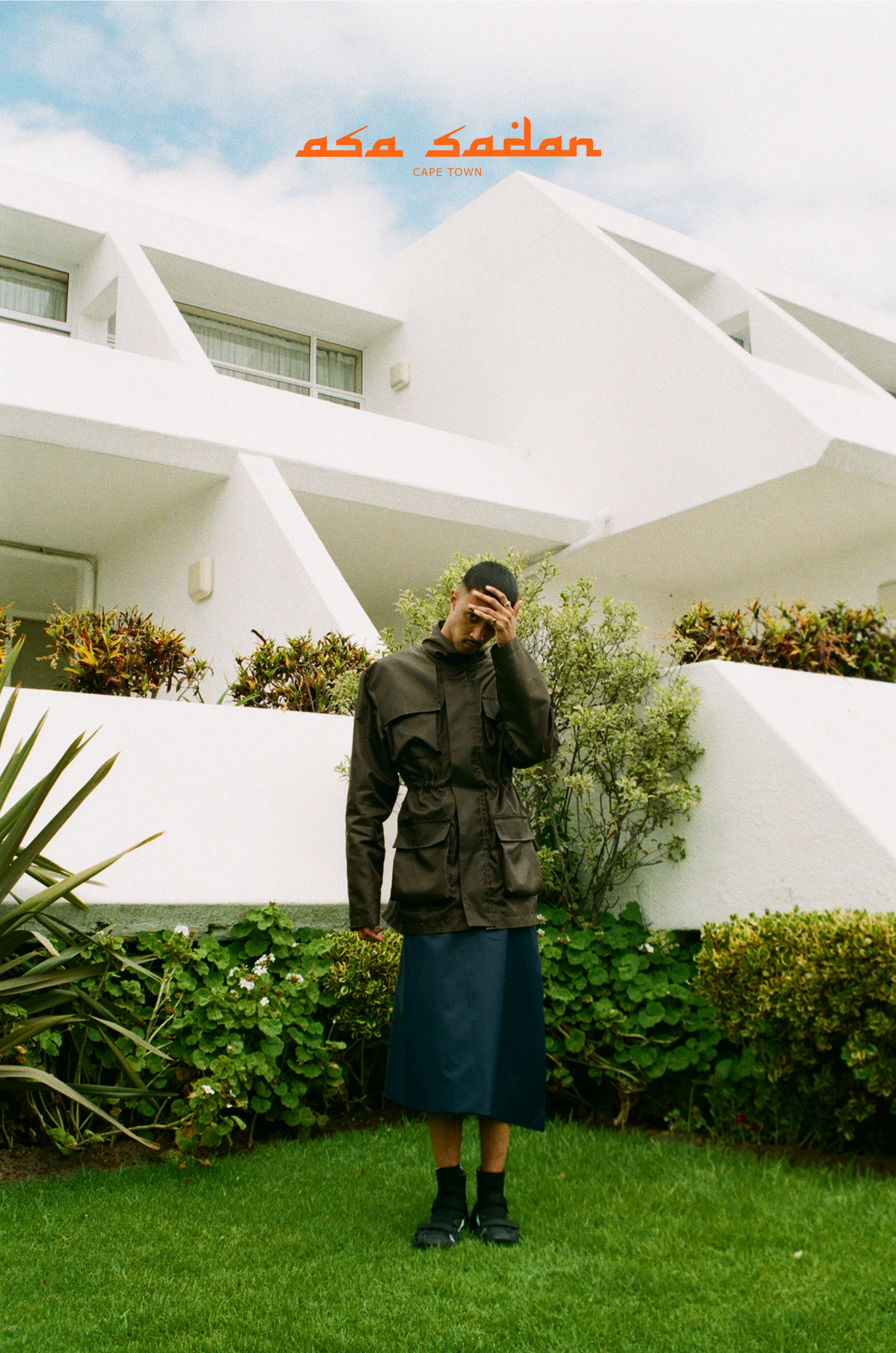
Photograph by Hishaam Abrahams
The Masters in Business Administration at Central Saint Martins was the perfect intersection between art, design and commercial practice, with the intention of implementing art principles and design thinking within various business scenarios, with problem-solving lying at the heart of the business case.
Being accepted at this institution was an achievement in and of itself, with CSM’s reputation and its alumni being some of the greatest creative practitioners. The knowledge gained here was essentially the placement of the keystone in my education, from
both a creative and economic point of view. I was also privileged enough to intern and assist for various brands during my time in London.
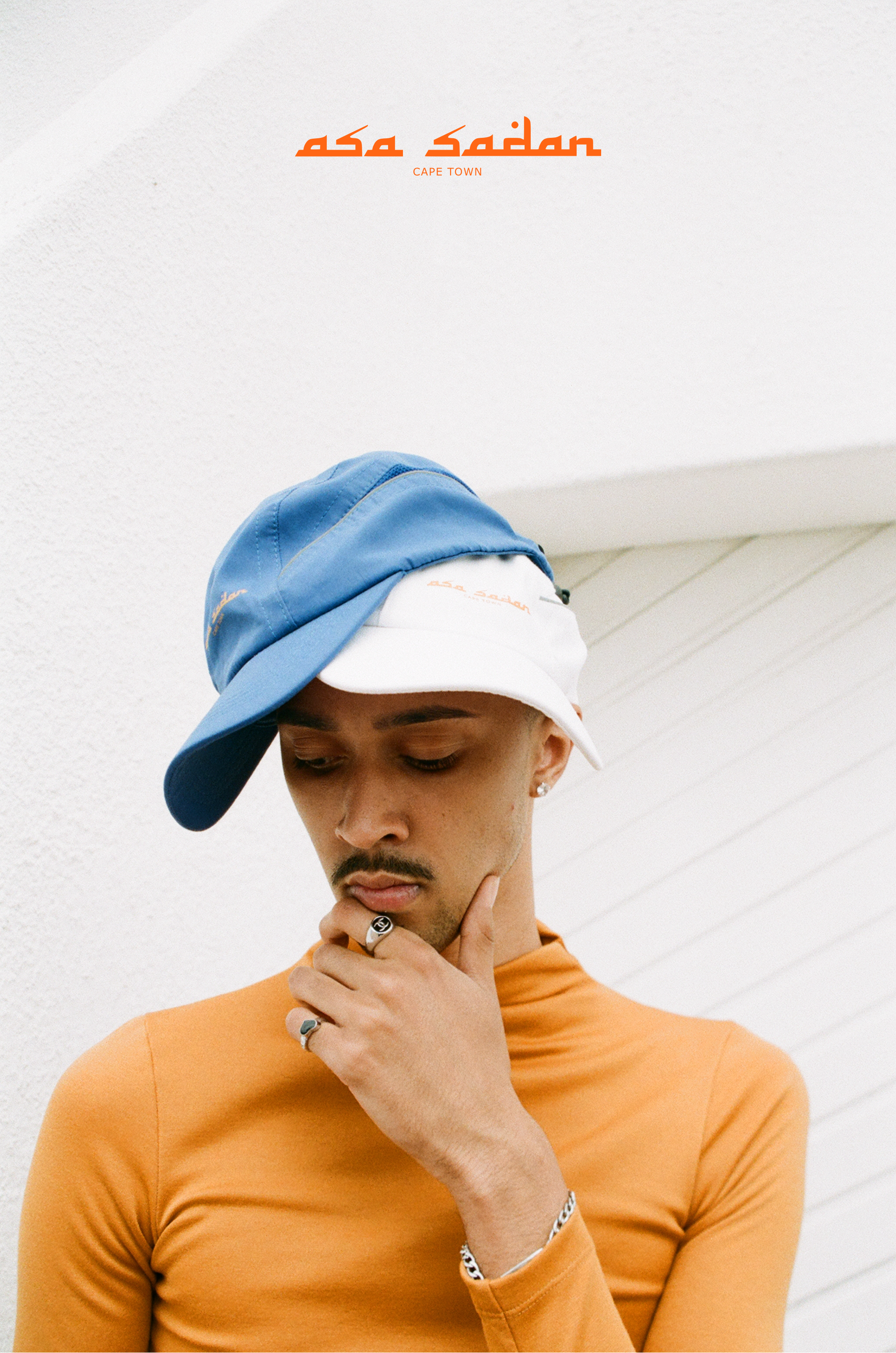
Photograph by Hishaam Abrahams
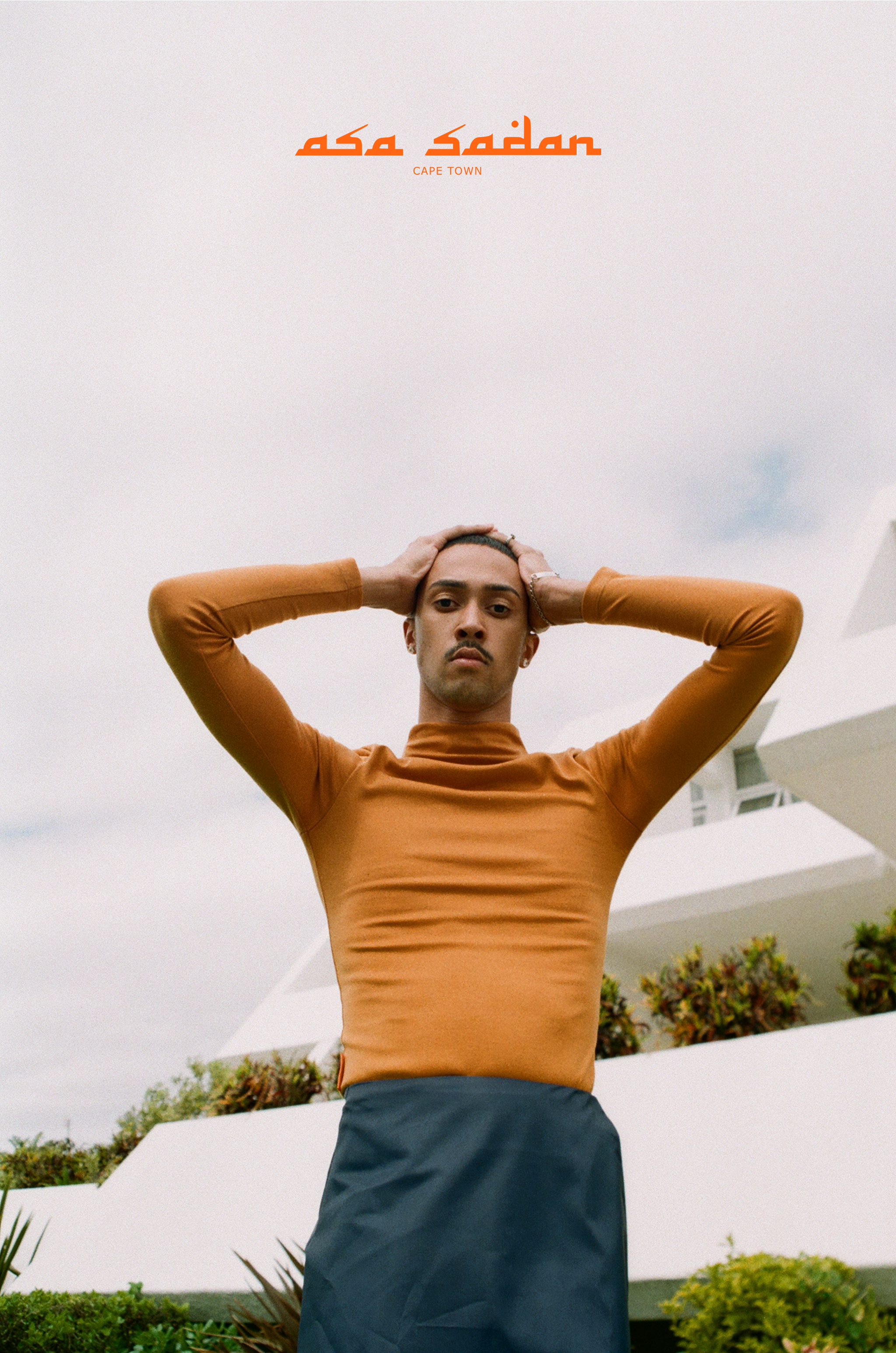
Photograph by Hishaam Abrahams
The ASA SADAN aesthetic is also that of a contemporary tech-infused luxury brand, largely inspired by classic tailoring and indigenous craftsmanship. How would you describe the design aesthetic of your brand?
I’d describe it as exactly that. The modernity within the design speaks to contemporary utility (utility here meaning that garments serve various functions depending on environment and context), the heritage speaks to age-old artisanal techniques.
The garments are designed in a manner that allows the wearer to acquire products slower over time, building a wardrobe of elevated essentials for every occasion. The fabrication of the garments are integral to the luxury component of the brand.
Cape Town’s climate serves as quite a strong influence in the design process, as we tend to see various weather conditions at any given time, sometimes even within a one-day time frame. Trans-seasonal garments are therefore always the foundation of the offering.
Please tell me more about Emjozolo – your brand’s short film. Who did you collaborate with to make this happen?
The ‘Emjozolo’ project was actually the brainchild of my friend and collaborator Bathandwa Ngwendu, in collaboration with Jo’burg based photographer Tshireletso Calvin Dithipe. We decided to collaborate on the project as the concept aligned quite strongly with the brand manifesto. Bathandwa released the following statement on the project:
Emjozolo (Johannesburg) is a short film inspired by the stories our grandfathers told us about them being young men coming to Johannesburg for the first time to seek greener pastures in the big city. The transition from township, to the suburb and then the city intersect the different experiences in a city. The premise is set on finding your tribe and moving with them.
Brotherhood set on values based off the eagerness of providing for loved ones. Back in those days, a man who left home for the big city, left home in their most presentable attire. This short is a reimagined feeling of joy, adventure and excitement of coming to Johannesburg for the first time
The concept of the project aligned with the ASA SADAN manifesto as it resonates with the generational outlook on cementing our narrative through an art-based practice, so it was a natural fit. Bathandwa has resonated with my work and vision since we first touched base in 2019. We plan on releasing new projects together in the new year.
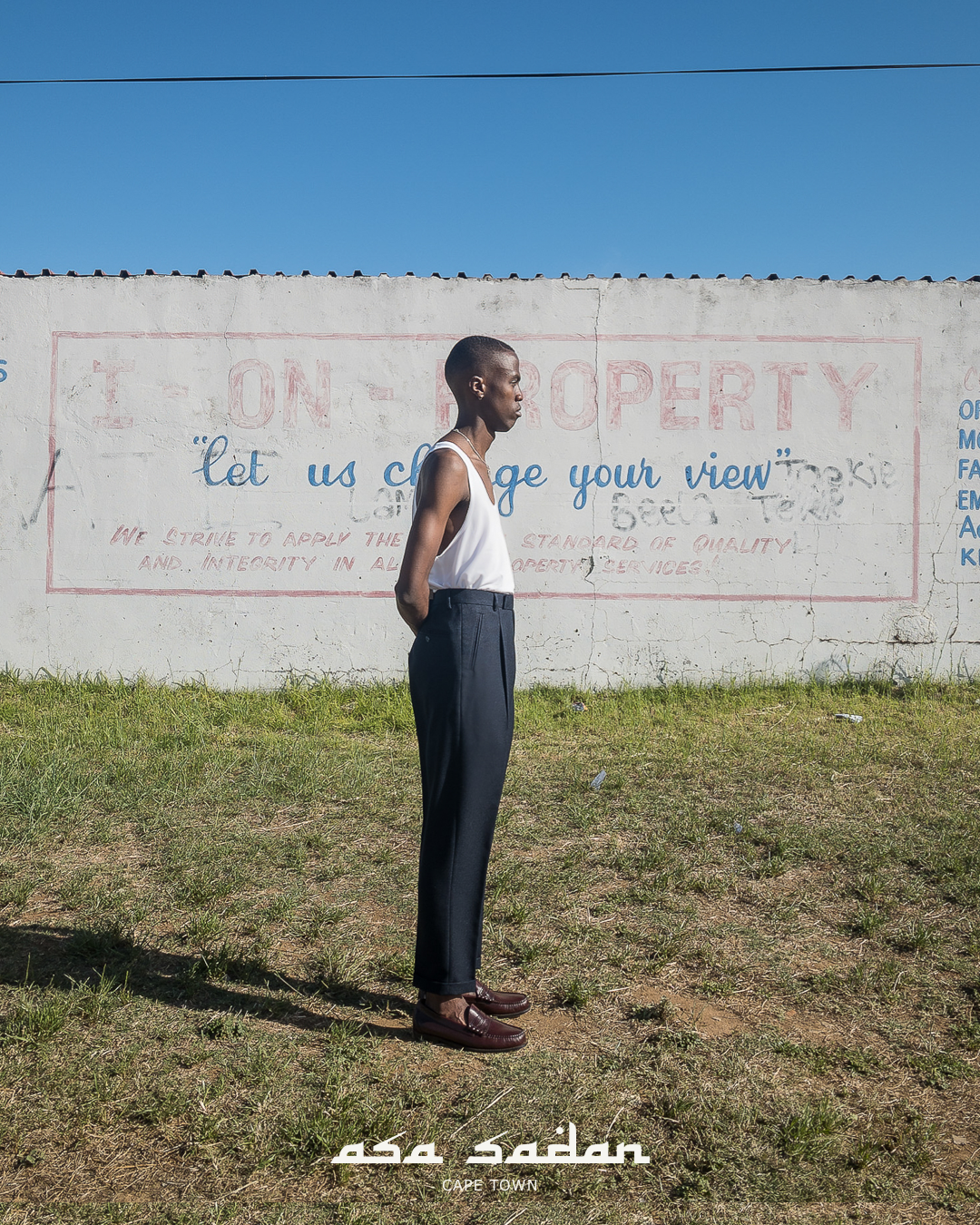
Photograph by Imran Mohamed
A couple of months back you dropped your first collection, at the Duck Duck Goose store in Cape Town, which included tailored trousers, tactical vests, sports caps and long sleeve logo T-Shirts. How was this experience for you as an upcoming designer?
This is a particularly difficult question to answer. Much like my experience at Central Saint Martins, having our first commercial offering at Duck Duck Goose is still quite surreal. To be alongside brands like Thebe Magugu, Rich Mnisi and Good Good Good and others is truly an honour. These are brands that we have looked up to and learnt from for the longest time.
We approached Daniel, the store owner, shortly after graduating from CSM, who resonated strongly with the brand concept. Daniel and I have known each other for some time, so he was aware of the foundational knowledge and experience ASA was built upon, which undoubtedly played a role in him taking on the brand.
Any plans for the remainder of the year going into 2022?
We are trying to let things progress naturally, so we’re not defining ourselves to any particular milestone. The initial reception of the brand was beyond anything we ever expected, and we believe our creative integrity lies at the heart of this. Choosing to work with artists who resonate with our vision is the only real plan.
We are looking to increase our output at all levels of course, we’re a young business that wants to grow. We are looking to increase our offering, from a supply chain capacity, product offering, visual content and retail network. There are some developments already in progress for 2022.
We are excited to experience the growth of the brand and creative practice with those who resonate with the work.
Credits:
Creative director: Imran Mohamed
Photographer: Hishaam Abrahams and Imran Mohamed
Stylist: Jeremie Bisimwa and Imran Mohamed
Producer: Raees Kilshaw / shyne4evaproductions
Model: Shanti Cullis and Bathandwa Robo
Assist: Ameer Jappie
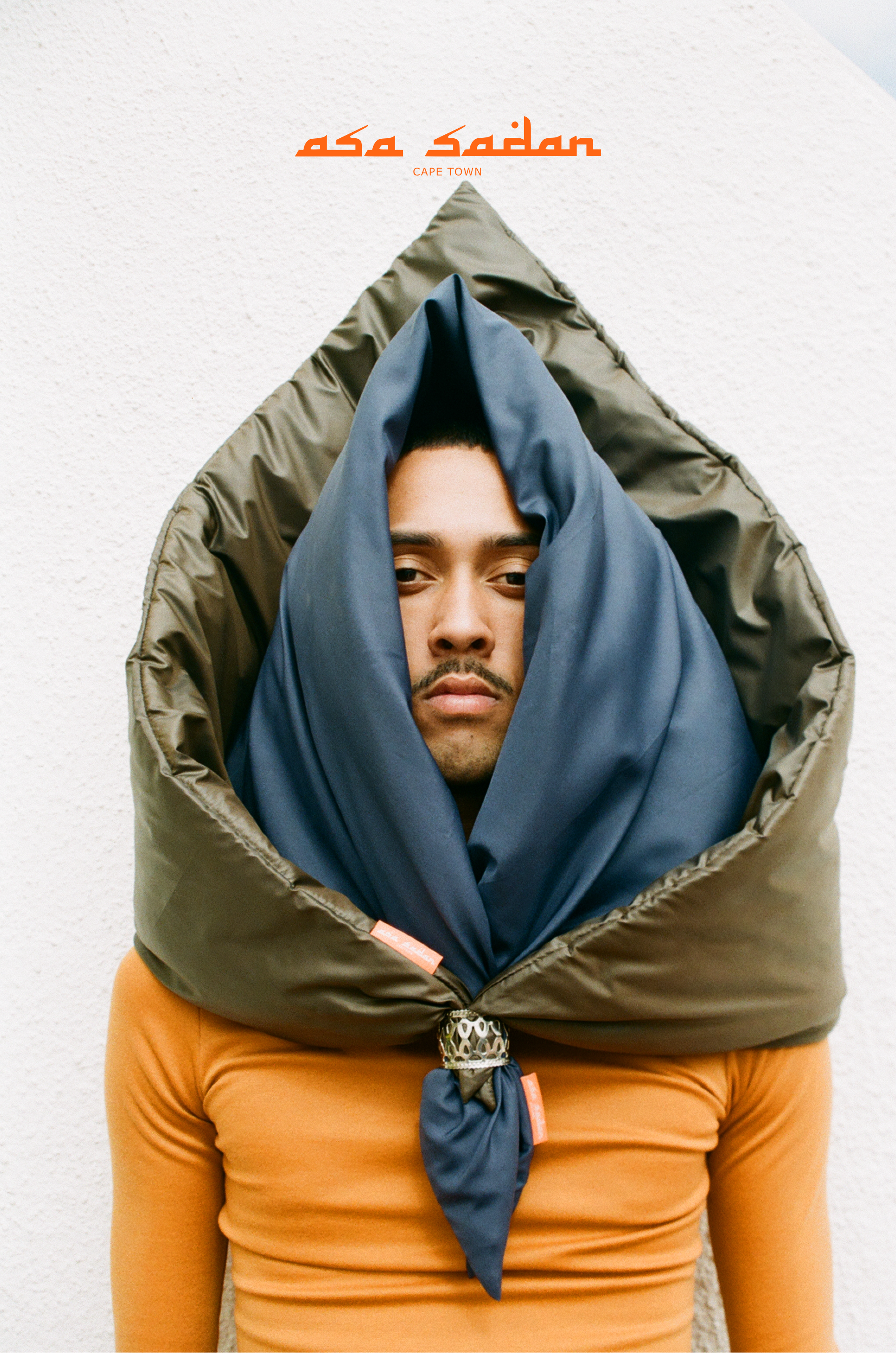
Photography by Hishaam Abrahams



















































